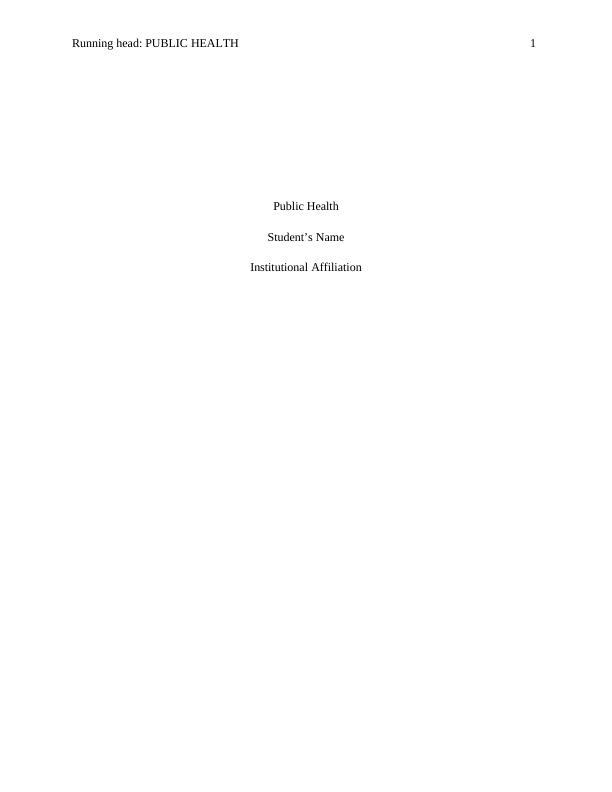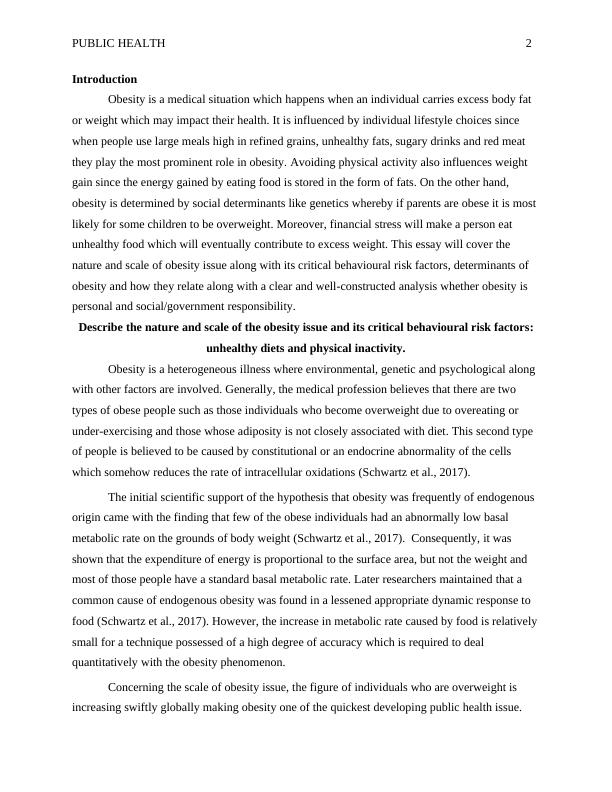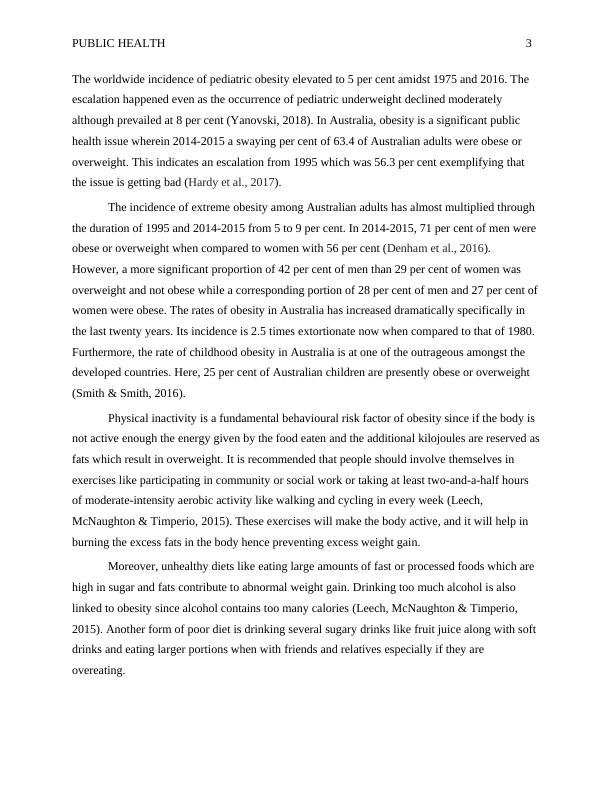Obesity: Nature, Scale, and Determinants
Critique the determinants of obesity in terms of the relative contribution and relationship between social determinants and individual lifestyle choices.
9 Pages2955 Words219 Views
Added on 2023-04-12
About This Document
This essay explores the nature and scale of the obesity issue, its critical behavioral risk factors, and determinants. It discusses the relationship between unhealthy diets, physical inactivity, and obesity. It also examines the role of genetics, financial stress, and socio-economic status as determinants of obesity. Finally, it provides a clear analysis of whether obesity is a personal and/or social/government responsibility.
Obesity: Nature, Scale, and Determinants
Critique the determinants of obesity in terms of the relative contribution and relationship between social determinants and individual lifestyle choices.
Added on 2023-04-12
ShareRelated Documents
End of preview
Want to access all the pages? Upload your documents or become a member.
Identify The Main Causes of Obesity Essay
|8
|1822
|212
Literature Review on Obesity: Causes, Symptoms, Related Diseases, and Interventions
|7
|1448
|96
Ethics and Research in Professional Context Assignment
|13
|3320
|215
Prevention of Obesity
|11
|2917
|127
Child OBESITY AND ITS MEASURES HEALTHCARE
|16
|769
|16
Causes, Symptoms, and Interventions for Obesity
|8
|2037
|39



